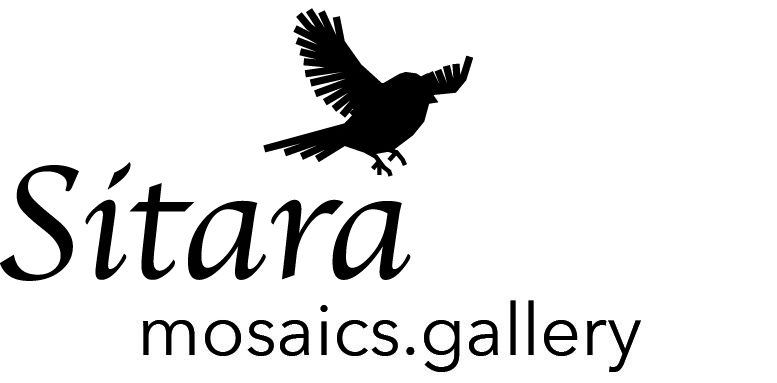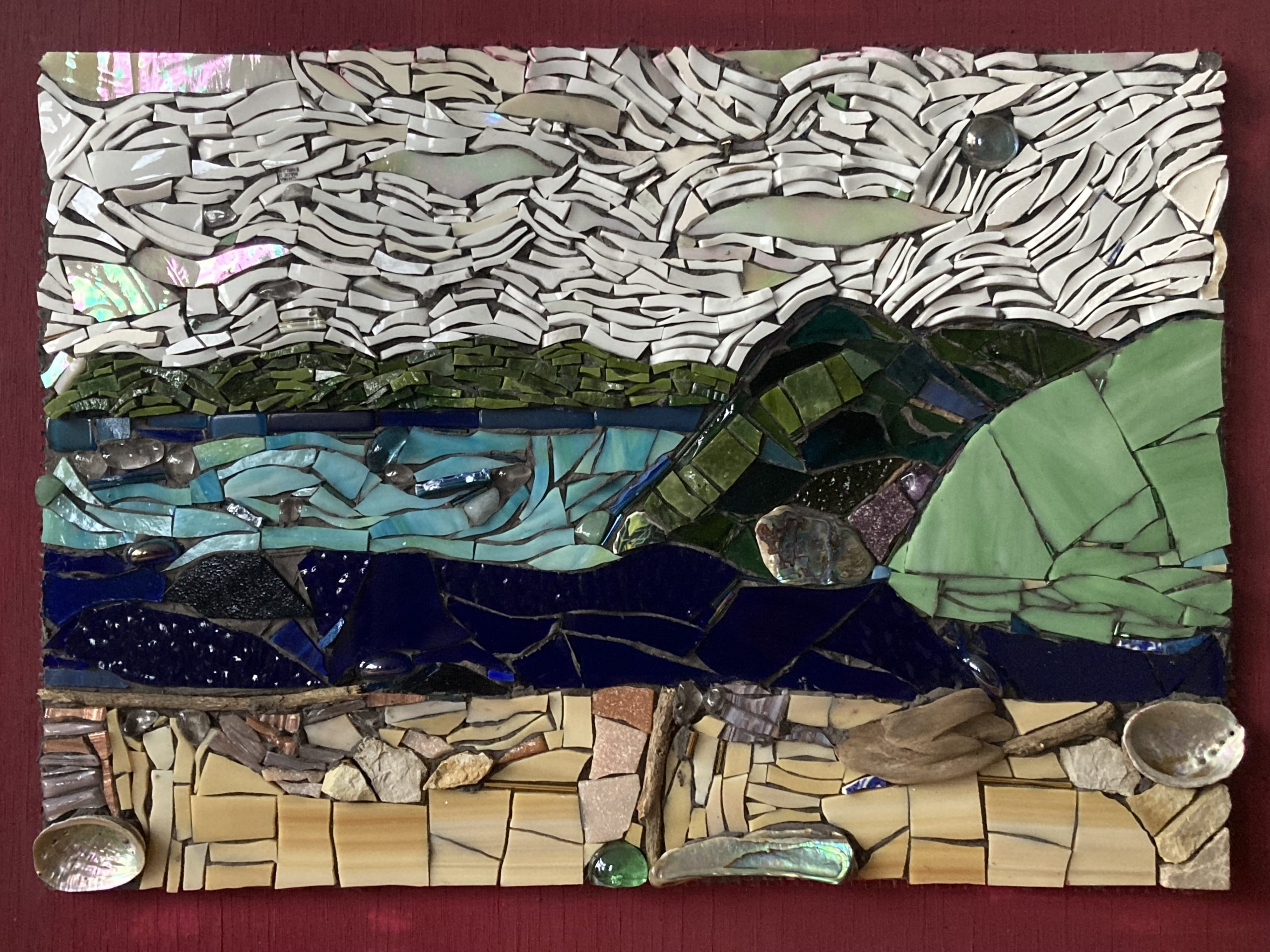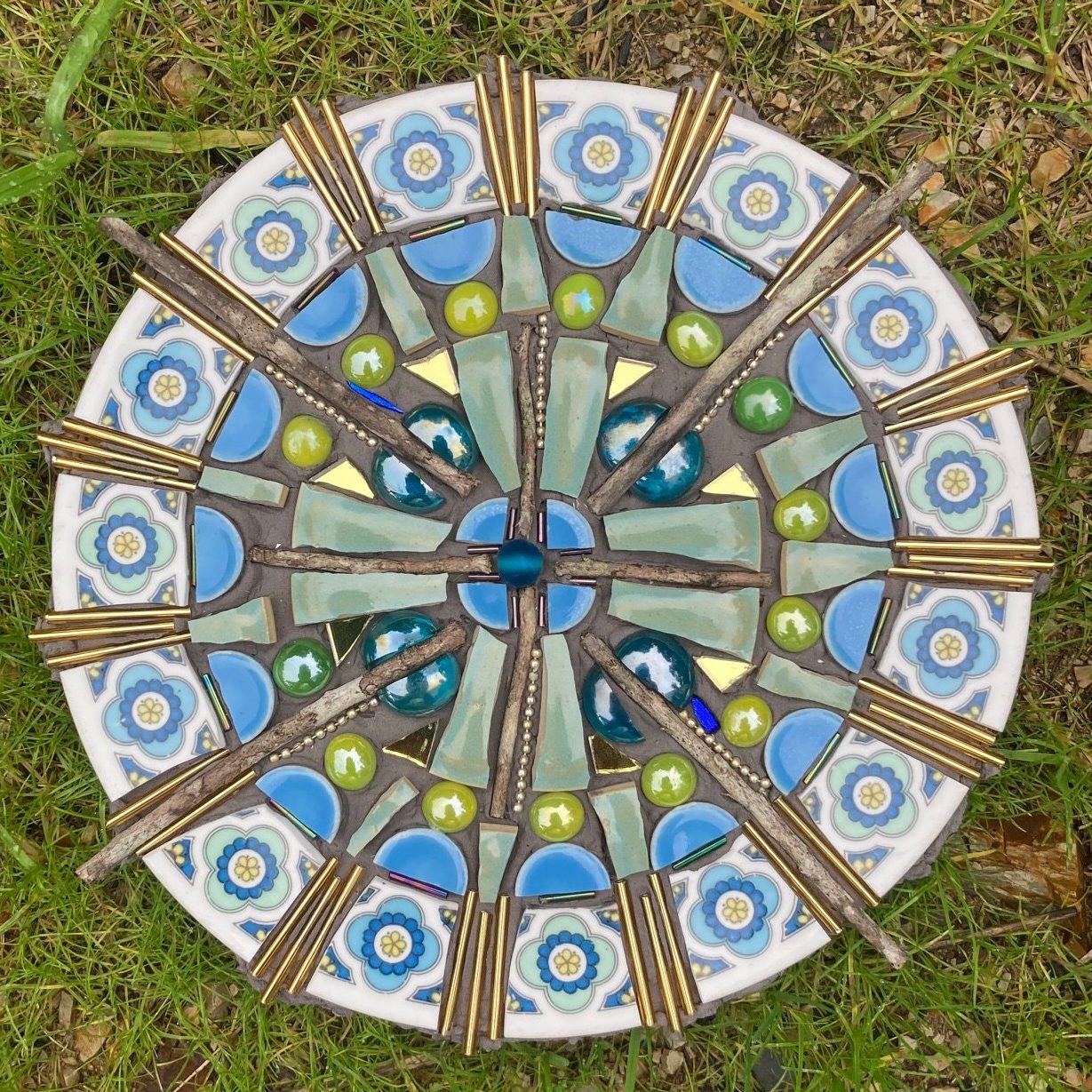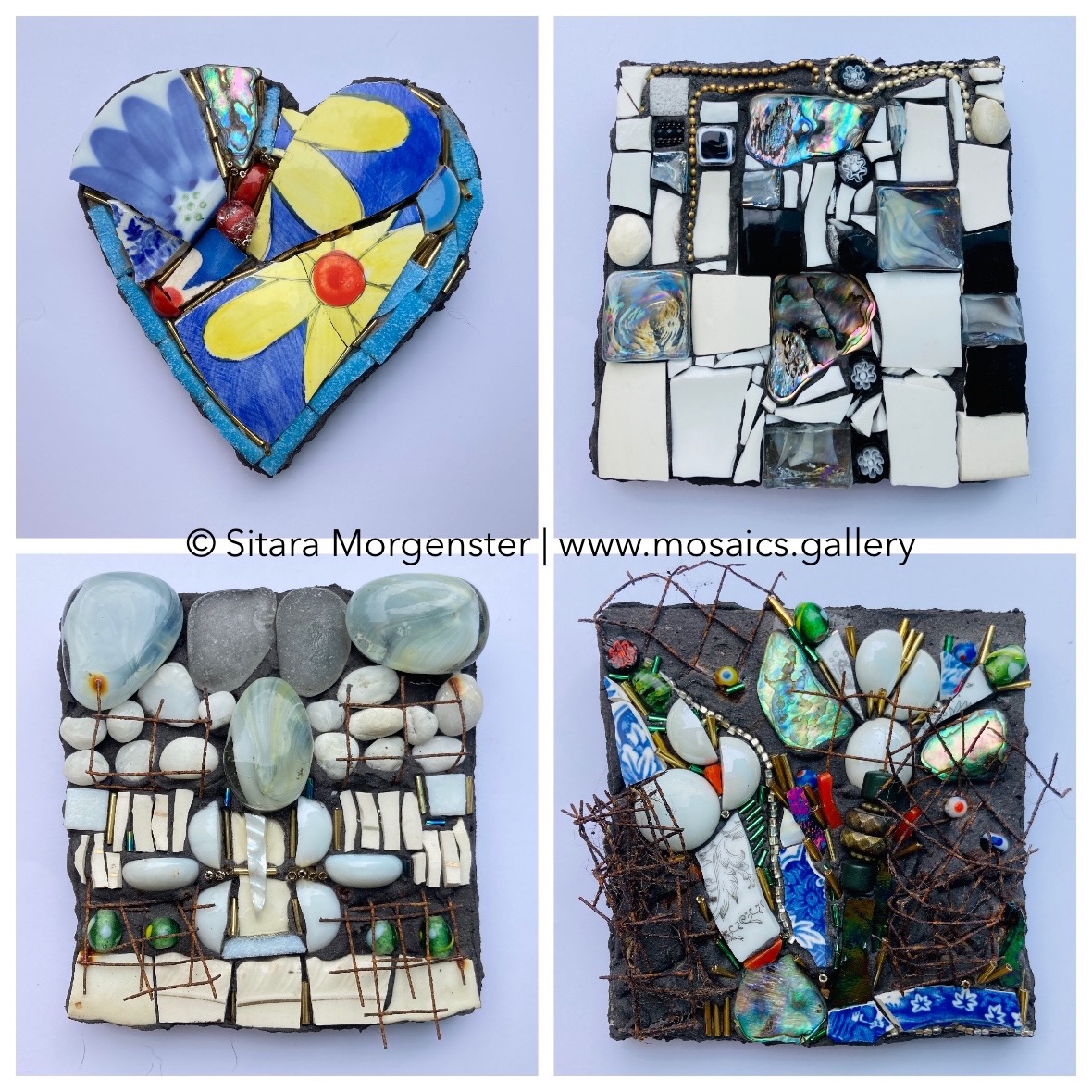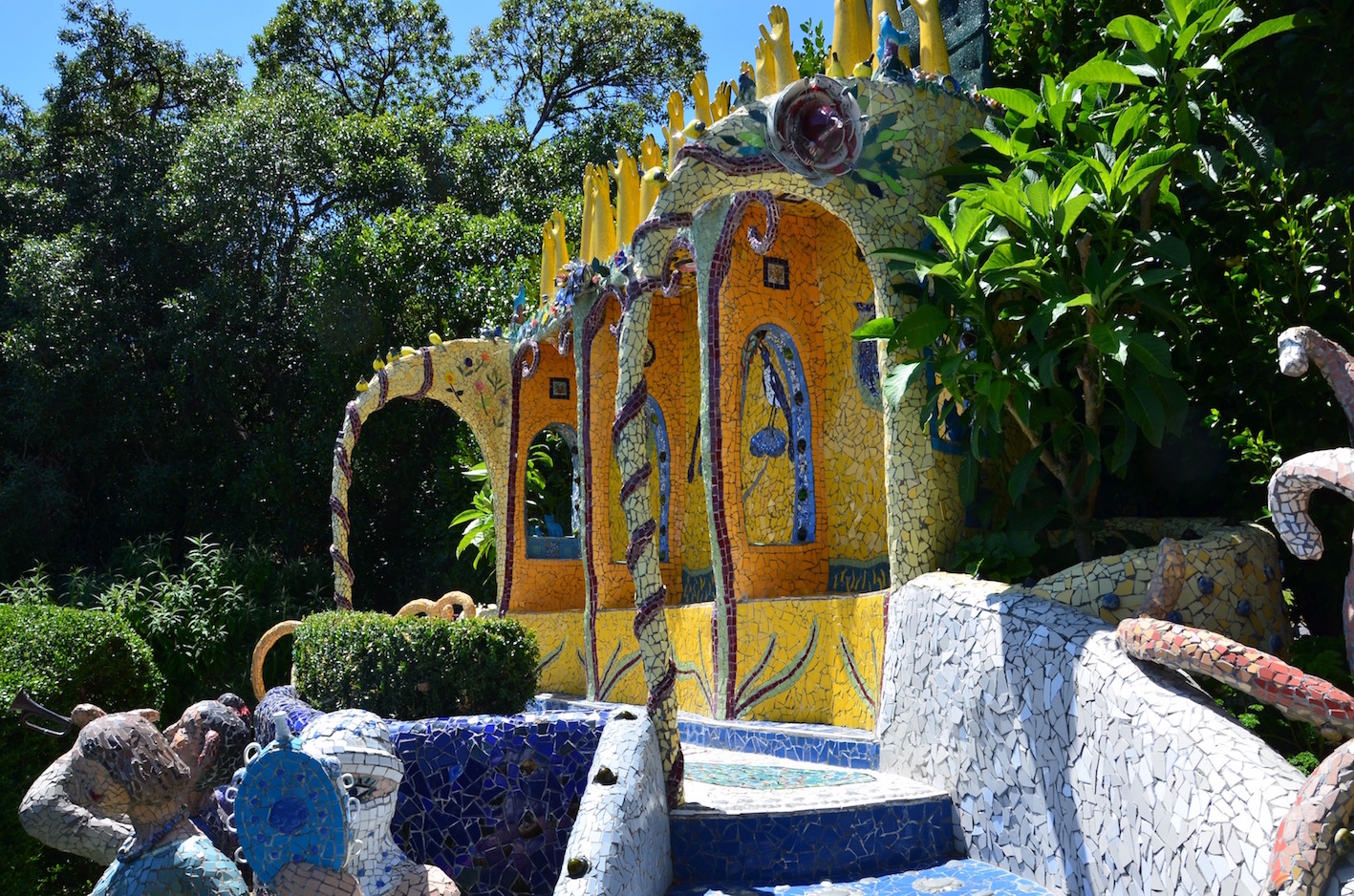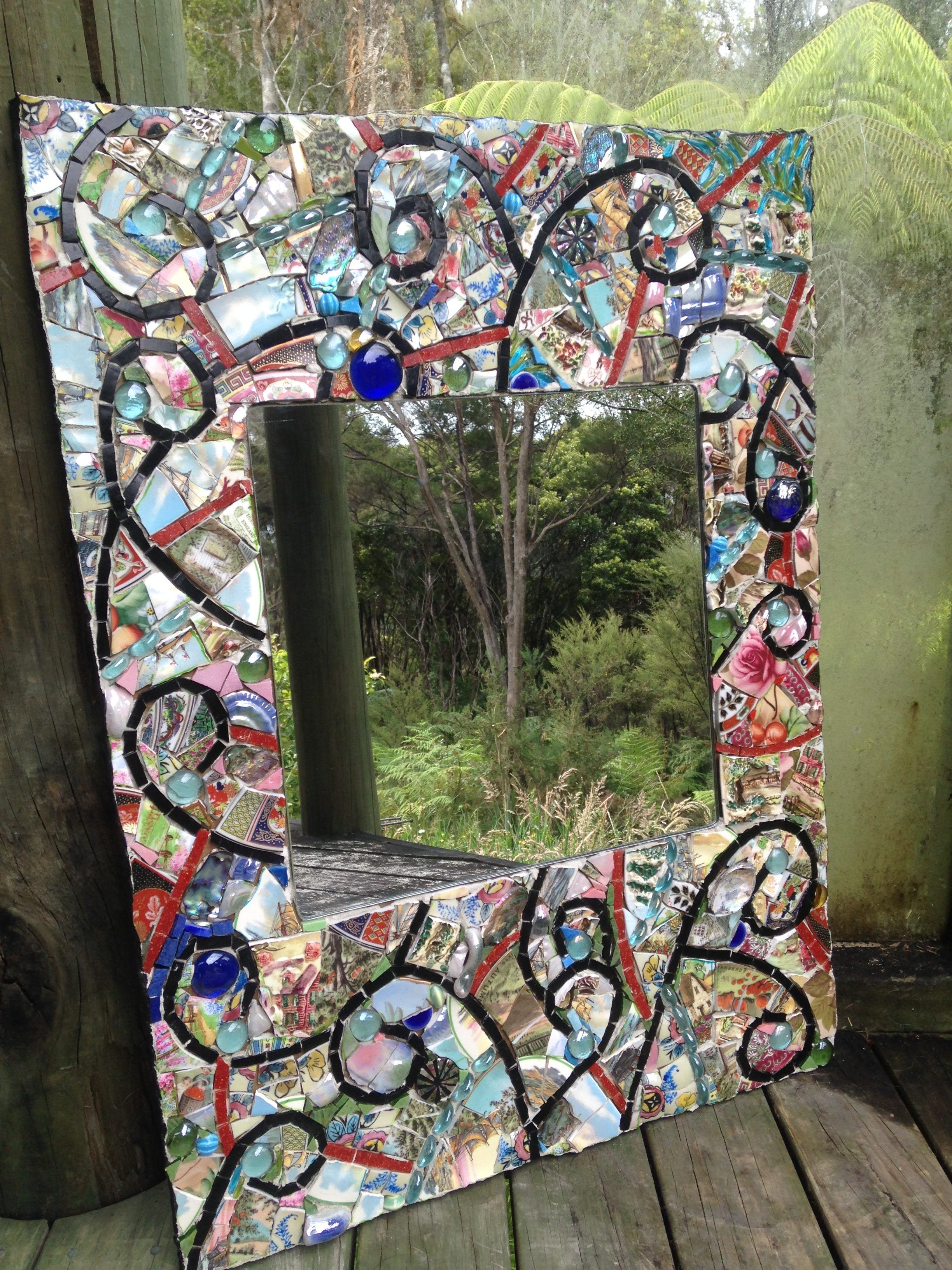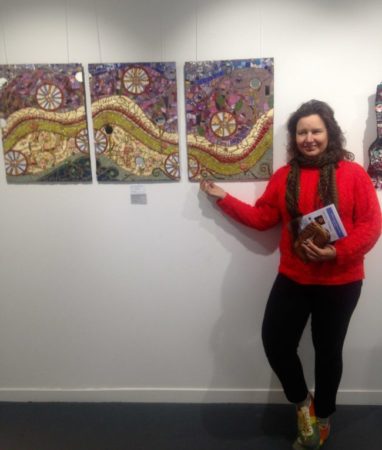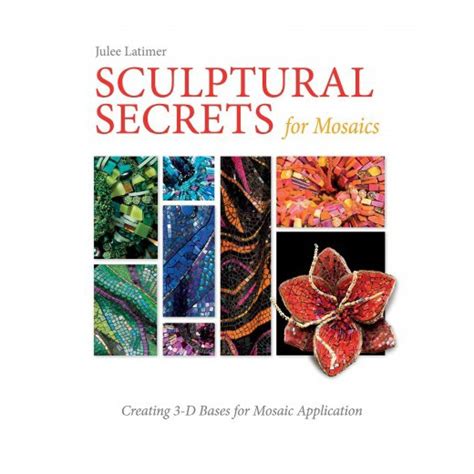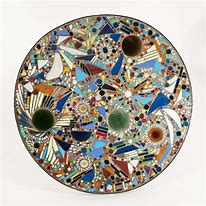New Zeascape
“Home Sweet Home”
This mandala (or is it a ship’s wheel and a compass?) is still in transit to the other side of the world. It’s for my eldest niece, who recently moved into her own new house. I obviously wanted to make something beautiful for her, but while we get along...
The 100 Day Project 2021
Hey everyone! The above mini-mosaics result from my participation in the 100 Day Project (2021). I decided to use it to make a small (10x10cm) square mosaic every single day. It started on the 31st of January, and I completed nearly seventy mosaics, some of which you can see...
Akaroa Giants House Interview
“This situation is an opportunity. You have to turn the negative into a positive,” says Josie Martin. Martin is the creator and owner/operator of The Giants House in Akaroa, in Aotearoa/New Zealand. It’s a historic villa with terraced gardens full of sculptures, mosaics and ceramics by the artist. We’re...
Hanging Garden
Mosaics.Gallery October Newsletter 2018
My currently very irregular newsletter has a new issue out, with the latest mosaic classes (in Peria), mosaic tips and mosaic news for mosaic enthusiasts and wannabe mosaic makers! Receive it directly in your inbox by clicking on the link, then on “Subscribe” in the top lefthand corner. Click...
Highly Commended in the Margaret Coupe Award category
I received “Highly Commended” at New Zealand’s bi-annual national exhibition of mosaic art 2018, held at the Estuary Art Centre in Orewa near Auckland in September, organised by the NZMA, the New Zealand Mosaic Association. It’s a great boost, especially given the fact that I’ve felt my style of...
Mosaic book review: Julee Latimer’s “Sculptural secrets for mosaics”
Julee Latimer’s book Sculptural Secrets for Mosaics (2017) is a very personal exploration of 3-D mosaic-land. Latimer outlines step-by-step how to start a mosaic sculpture from scratch, be it a massive piece such as her Rosaic, the armchair from foam blocks covered in stained glass roses, or some wildly intricate...
What Lee Krasner’s Mosaic Tables and Jackson Pollock’s rejected mosaic have in common
There is a delightful mosaic scene in the biopic “Pollock” (2000), starring Ed Harris as the painter, and Marcia Gay Harnden (who received an Oscar for this role) playing his wife Lee Krasner. At just over an hour and 4 minutes, Krasner is seen creating a mosaic table. Four...
Video-blog of work-in-progress
Update: picture gallery after finishing the second attempt to “By the pool”, as the first version shown as WIP below was way to heavy to transport! On my Mosaics.Gallery blog this month a mosaic art-vlog instead of writing, taking you up-close and personal to a commission I’m working on:...
